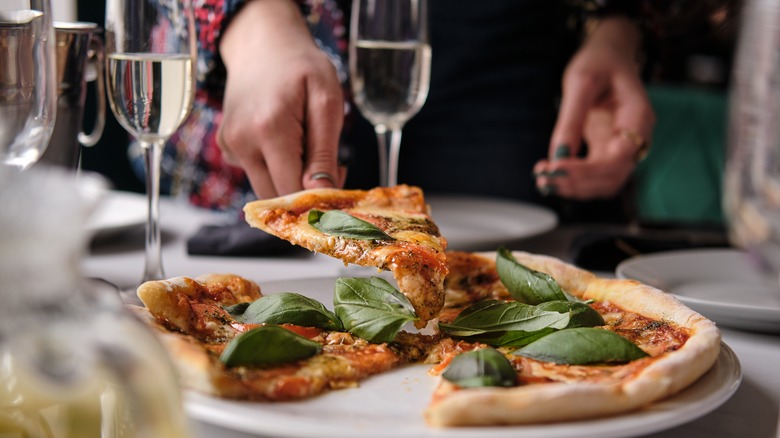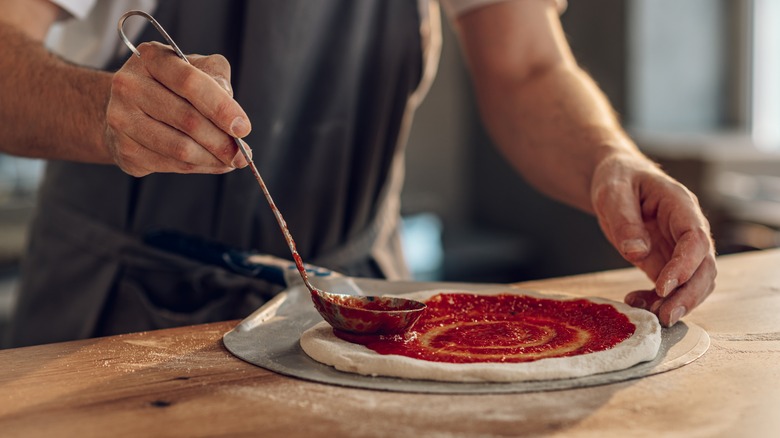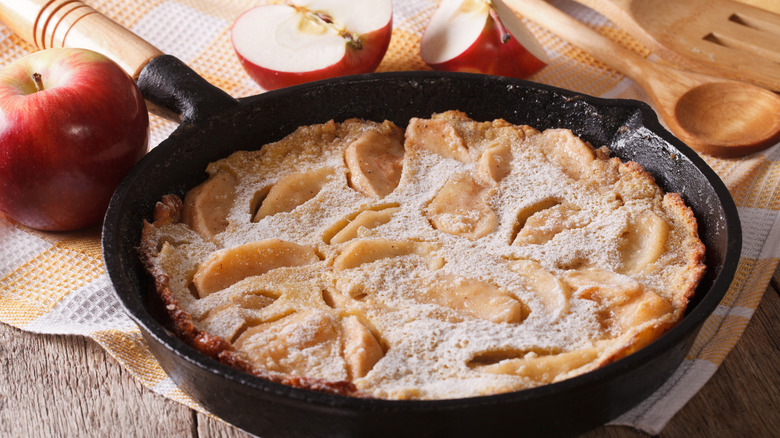Add Champagne To Your Pizza Dough For A Better Crust
After shaping your kneaded dough into a disc, adding sauce and a mound of cheese, and dusting your counter with flour and mozzarella in the process, you place your homemade pizza into the oven. But when the timer beeps at last, your evening-long excitement falters in an instant — the crust is pale and spongy. Nothing ruins a date night or cooking party like an underwhelming pizza crust. Despite the energy you may devote to making pizza dough from scratch, it seems as though crispy air bubbles and a golden finish are only found on pizzas cooked with a professional pizza oven.
However, one method used to improve a pizza's texture does not require advanced equipment or extra kitchen space. It's time to swap water for Champagne in your pizza dough. Throughout every dough-making process, yeast emits carbon dioxide and alcohol when it consumes the starch and glucose found in dough. These carbon dioxide molecules eventually expand and push the dough to rise in the oven. Now, here comes Champagne. The millions of bubbles fizzing in a bottle of bubbly have more potential than just spewing from a Champagne flute. Introducing more carbon dioxide to pizza dough lightens its texture, making the dough aerated and lifting your dough to new heights. Since the dough is less weighed down in the oven, it can stretch and develop additional flakiness.
Price tag won't matter
One potential drawback of adding Champagne to your pizza dough is the cost associated with the French bubbly. Instead of using a premium bottle, try to find the cheapest one available. Considering the subtle flavor variations that will be lost in baking (and overwhelmed by powerful toppings, like tomato sauce or spices), the difference in quality between an $80 bottle of Champagne and a $7 bottle will be nearly undetectable. More important than the quality of the Champagne is the amount of added sugar. If you want to avoid introducing extra sweetness to your crust, select a Brut over a Doux.
On the other hand, if perhaps you already have a Cava or prosecco on standby, feel free to substitute other sparkling wines for Champagne. Champagne's carbonation does much more work for the pizza's texture than its flavor profile, so other fizzing bottles will do the trick as well. On that note, most carbonated beverages (without added flavorings or sweeteners) could help make your pizza crust more crispy. Sparkling water and club soda, for instance, are also heavily carbonated. As with Champagne, the drinks' carbon dioxide can be wielded to aerate pizza dough. With several types of fizzy beverages to choose from, perhaps picking the bottle that pairs best with your finished pizza and fits your budget is the premier selection method.
Add bubbles to other batters
Champagne pizza may impress guests, but adding bubbly to pizza dough is only the start of how carbonated drinks like sparkling water can improve baked goods. In fact, including air bubbles will improve the texture of almost any batter, since carbon dioxide molecules expand in the oven regardless of whether they are in a batter or dough. With that extra aeration, your batters can achieve that desired lift while not being overly doughy.
Instead of hunching over your griddle, willing a dense batter to rise, enjoy chocolate chip pancakes that are as fluffy as promised. For your next brunch, try replacing the water or dairy required for a flapjack recipe with equal parts sparkling water. An apple Dutch baby (known for its distinctive rise and texture) could also benefit from more carbonation. Although this tip may require an extra trip to the grocery store, adding a carbonated drink to your shopping list can enhance the texture of several dishes on your baking itinerary.



